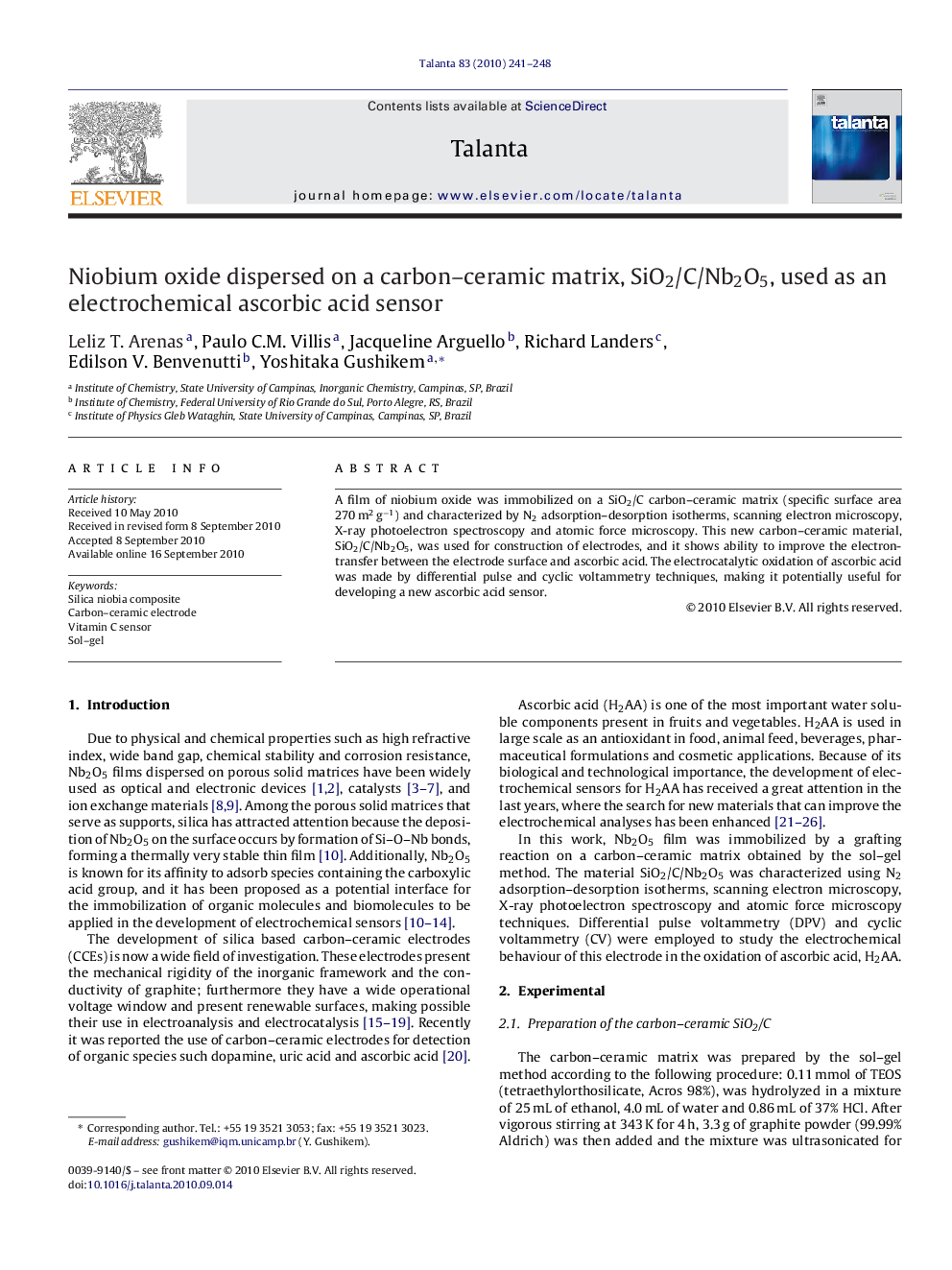| Article ID | Journal | Published Year | Pages | File Type |
|---|---|---|---|---|
| 1242487 | Talanta | 2010 | 8 Pages |
Abstract
A film of niobium oxide was immobilized on a SiO2/C carbon–ceramic matrix (specific surface area 270 m2 g−1) and characterized by N2 adsorption–desorption isotherms, scanning electron microscopy, X-ray photoelectron spectroscopy and atomic force microscopy. This new carbon–ceramic material, SiO2/C/Nb2O5, was used for construction of electrodes, and it shows ability to improve the electron-transfer between the electrode surface and ascorbic acid. The electrocatalytic oxidation of ascorbic acid was made by differential pulse and cyclic voltammetry techniques, making it potentially useful for developing a new ascorbic acid sensor.
Keywords
Related Topics
Physical Sciences and Engineering
Chemistry
Analytical Chemistry
Authors
Leliz T. Arenas, Paulo C.M. Villis, Jacqueline Arguello, Richard Landers, Edilson V. Benvenutti, Yoshitaka Gushikem,
